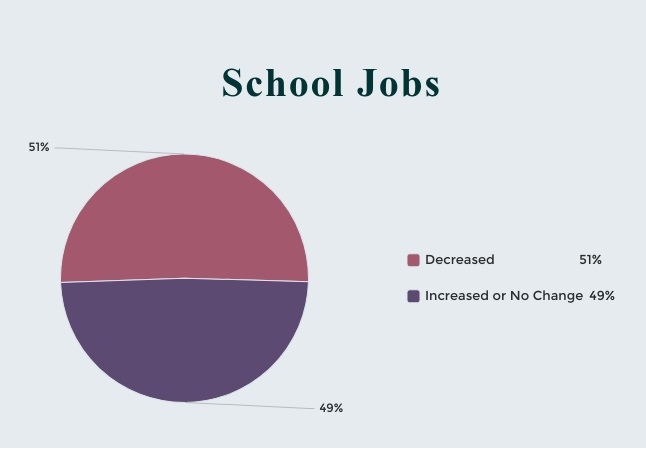Cost-Based Pricing
13 December, 2022
13 December, 2022
By Tanner Mullen
As a residential painting contractor for the past six years, I’ve come to realize that many of my customers really don’t care about how I came up with the price. They don’t care about how I measure, they don’t care about what metrics I use and they don’t care about how much paint I quoted as part of the cost. What they care most about are the following two things:
That’s it. If the answer to those two questions is yes, more often than not, I’ll win the job. So, I stopped the wargaming of coming up with a price.
When I first started my house painting business, I would spend 30 minutes, sometimes 60 minutes, calculating a price. I would run around the entire house with a tape measure, eagerly jotting notes, trying to keep up with a conversation going on in the background and getting frustrated when I “lost count” or forgot to tally up a measurement. It was a mess! Instead of focusing on building a relationship with the customer, I was too busy focusing on calculating the “perfect price.” This wound up hurting my sales numbers, and worse, made me feel as though I was wasting valuable time that could be spent building value and earning trust.
Let’s get started
There are three metrics to focus on when estimating a paint job: total labor cost, total material cost and projected profit.
Every business operates with a different labor cost. If you have employees, then tally up the total hourly rate that you pay each one of your team members and factor in “burden” amounts (payroll tax, workers’ comp, etc.) to calculate your total hourly rate. If you’re using subs, come up with a streamlined way to identify how much your sub will charge you. Typically, this is done on a square footage or a percentage basis; however, you would need to know what that agreement is ahead of time for cost-based pricing to work.
Unless you take on multiple jobs during a day — which in most cases doesn’t happen in the residential painting space — then cost-based pricing is fairly simple and will save you a ton of time working up your price; that will allow you to spend more time building a relationship with your customers and earning their trust.
Labor calculation
To start utilizing the cost-based pricing strategy, price your jobs on a “per day” basis (8-hour working day). Your job as an estimator is to identify how many 8-hour days the job will take, so for example, if you’re estimating a 2,300-square-foot interior house painting job, the goal is to first identify how many total days it will take your team to get the job done from start to finish. Let’s say the total hourly rate for your four team members is $100 per hour. This is calculated by adding up the hourly rate of each member of your team and adding in the burden amount.
Next, we need to identify how many days the team will be working on the job. For a 2,300-square-foot interior, top to bottom (ceiling, walls, trim and doors) I would assume that this job will take my team five total working days.
Five Days = 40 working hours per employee.
Identifying how long a job is going to take is a skillset that only can be mastered with experience and the knowledge of what your specific team is going to be able to accomplish. The beauty of cost-based estimating is that it’s all based on a projected profit margin, so when we price the job, we’re going to price it favorably (50%). This way, if a job runs a little longer or we use more material than anticipated, we allow a little room for error.
Let’s calculate the cost of labor for this job: 40 working hours x $100 (collective labor cost) = $4,000 total labor cost. Great! We’ve identified how much this job will cost us, as business owners, to staff our team on this project.
Material calculation
Next, let’s calculate total material cost. Material calculation works the same way as calculating the labor cost. We’re going to try to get as close as possible and use our expertise and knowledge to help guide us. It’s important to estimate favorably to allow room for error. On our 2,300-square-foot house, let’s assume:
This is a total of 35 gallons. To be safe, let’s add 5 extra gallons to our estimate to account for error and unforeseen variables, bringing our total gallon estimate to 40.
Now, let’s identify our material cost: 40 gallons x $40 per gallon = $1,600. Fantastic! We now have our total labor cost ($4,000) and our total material cost = ($1,600).
Our total cost for our project is now $5,600.
At this point, you can certainly add in any additional costs that you may incur that are job specific: for example, extra sundries, repair materials or any other variables you think would be necessary to factor in.
Price and profit
Now that we have our total cost for the project, let’s calculate the price. A general rule of thumb is to price your projects at a 50% profit margin. Profit margin is the amount of money you make in relation to how much it costs you to perform the job, so the goal is to “double” our investment. A 50% margin on a $5,600 job means your total cost = $11,200. Ta-da!
The simplicity of this strategy will allow you to easily calculate a price and, more importantly, give you more time to build a relationship and value with your customer.
I encourage you to utilize cost-based pricing as a gateway to confidently negotiate pricing. Knowing that you are pricing your job at a 50% margin should give you the confidence to lower your pricing if you find yourself in a position where you need a job quickly or want to speed up the sales cycle by offering a discount.
If you would like a free calculator to help you calculate cost-based pricing, visit http://sellpaintjobs.com APC




Add new comment